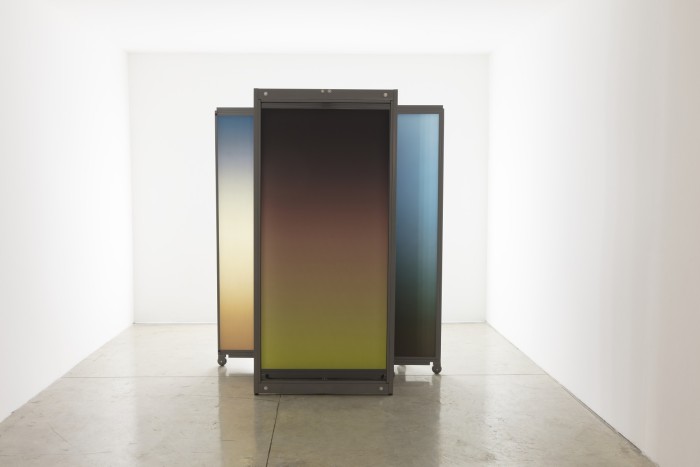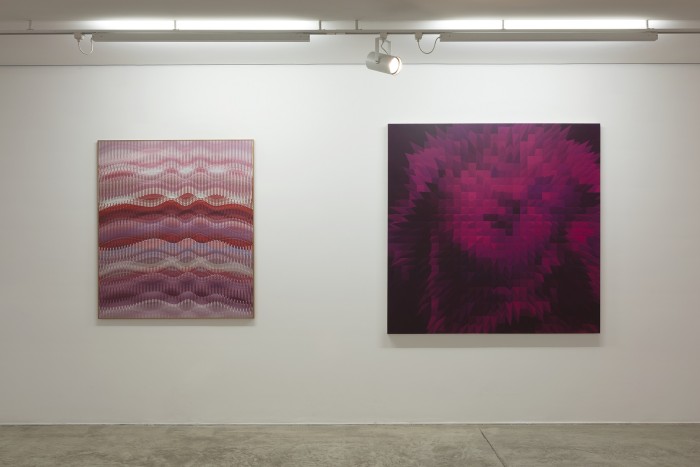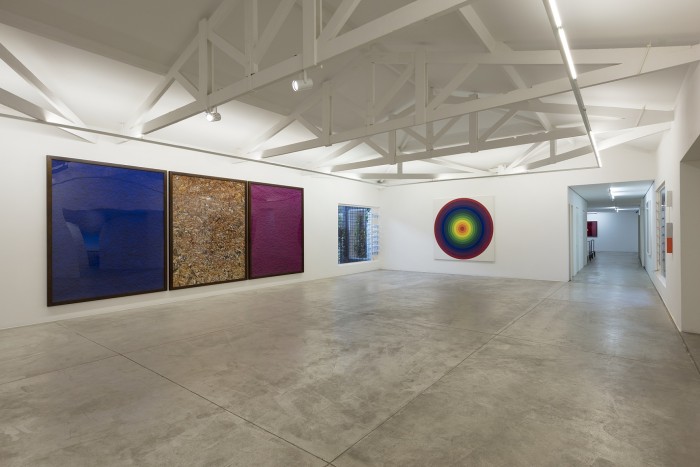Tiempo de lectura: 2 minutos

29.01.2017
Galeria Nara Roesler, São Paulo, Brazil
21 de noviembre de 2016 – 21 de enero de 2017



The group exhibition Chromophilia vs. Chromophobia: an exploration of color features eighteen pieces by Abraham Palatnik, Antonio Dias, Bruno Dunley, Cao Guimarães, Carlito Carvalhosa, Daniel Buren, Daniel Senise, Haegue Yang, Hélio Oiticica, Julio Le Parc, Karin Lambrecht, Lucia Koch, Marco Maggi, Rodolpho Parigi, Sérgio Sister, Tomie Ohtake, Vik Muniz, and Xavier Veilhan. Organized by the gallery’s artistic director Alexandra Garcia Waldman, it centers on the battle between the color chart vs. the color circle.
Building on the theoretical base of the essay Chromophilia from David Batchelor’s book Chromophobia, the exhibition experiments with how contemporary artists play, destroy, and reveal in the tension between post-1960’s use of industrial colors and the advent of the color chart. Batchelor describes the color chart as a disposable list of readymade color. “Each strip of paper is a perfect abstract painting in miniature, or a compact example of color serialism or one page of a vast catalogue raisonné of monochromes.” The chart gave artists freedom and autonomy in their use of color, previously unimaginable within the rigid structure established by the color circle. As he states: “the color circle establishes relationships between colors and implies an almost Feudal hierarchy among colors –primaries, secondaries and tertiaries, the pure and the less pure.”
The artists greet viewers with the full spectrum of drama with color. Daniel Buren rejected the idea that eliminating color would produce a purer form of art –quite the opposite: for him, color is essential and cannot be substituted by words or action. Shown alongside Colors, light, projection, shadows, transparency: works in situ 5, by Daniel Buren, is Rodolpho Parigi’s Santa Teresa Nerveux, with explosive colors weaving flat geometric forms into compositions that evoke fragmented, semi-abstract urban landscapes. In the same space, Pictures of Pigment: Monochrome, pink-blue-gold, after Yves Klein, by Vik Muniz, communicates a sentiment of control through the vivid color of choice of the late Yves Klein. On the other side of the exhibition, Sérgio Sister recontextualizes classical ideas about the canvas as a window in his exploration of the intricate relationship between colors when they interact with space and air.
For Tomie Ohtake, color was a lifelong fascination, and she explored them continuously with juxtapositions of circles, ovals, arcs, and mounds to emphasize the experience of her works. The selected piece, one of her more recent paintings, invites contemplation and immersion into the logic of her art. Lucia Koch also utilizes color to preserve, alter, and continue an experience, showcase –gradient, from the gradient series, preserves the color of sunsets onto printed canvas. The work is then lit from the back and the experience is completely altered by an artificially preserved nature.
The artists challenge the viewers to experience color. They materialized colors to provoke freedom of experiment, leaving behind the rigidity of the color circle.
Continuing her exploration of color and this hypothetical battle between the color chart and the color circle, Galeria Nara Roesler’s artistic director Alexandra Garcia Waldman presents the second part of the group exhibition Chromophilia vs. Cromophobia: Continues, now at the Rio venue.
http://www.nararoesler.com.br/
Comentarios
No hay comentarios disponibles.